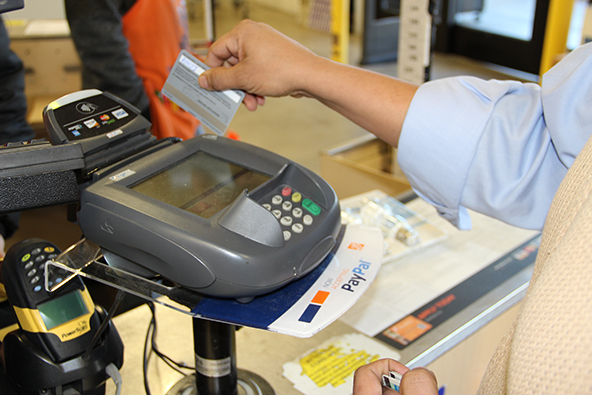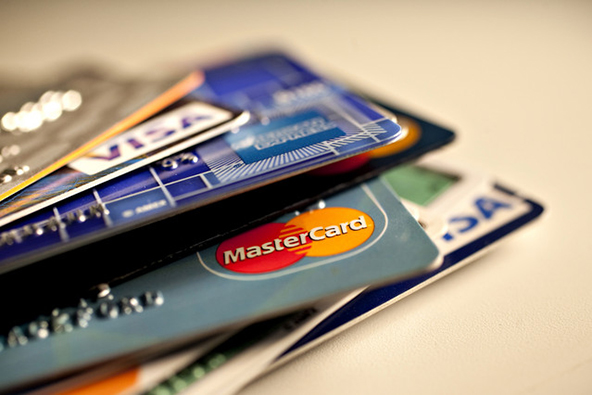PayPal vs. MasterCard – The Empire Strikes Back

The Financial Times’ April Dembosky, among others, reports this morning on the latest shots fired in the ongoing war between PayPal and the credit card networks. MasterCard has accused eBay’s payment processing arm of taking a free ride on its own business model and is not willing to put up with the injustice any longer. Instead, beginning in June, the card company will start assessing a new fee to all transactions initiated through digital wallets. PayPal will not be the only victim, but will be joined by other digital wallet operators, such as Square, Google and Intuit, to name but a few.
Yet, I think there can be no doubt that MasterCard’s main target in this case is PayPal. And I’m surprised that none of the reports I’ve read mentions what surely must have been the major factor behind MasterCard’s decision. See, when PayPal rolled out its hugely ambitious campaign to become a payment option at physical retailers, not just at online stores, the processor’s biggest selling point was its below-cost credit and debit card processing — merchants like Home Depot were offered to accept cards through PayPal at costs that were lower than what Visa and MasterCard charge. How could anyone refuse? Naturally, the card networks were not happy, as PayPal could actually afford to subsidize its retail clients and potentially grow huge in the process, right under their noses. And that is a problem, as I will explain in a moment, but let’s take a look at the latest developments first.
MasterCard’s Digital Wallet Fee
Here is what Chris McWilton, MasterCard’s president of U.S. Markets, had to say at a conference last week about PayPal’s physical-retail aspirations, as quoted by Dembosky and others:
PayPal rides for free on the back of other business models. So they ride on the back of the networks for a [credit] card-funded transaction… I think they’ve got to be cautious that they don’t get too big and start making people wake up and say wait a minute, I’m actually losing business here because of your moving into the physical space.
As you see, despite being advertised as a “digital wallet” fee, the fee in question is clearly prompted by PayPal’s physical store-front exploits. In fact, if anyone still needs convincing, here is what Visa CEO Charlie Scharf had to say about its rival’s decision:
I think it is totally appropriate to do that… Some of the people we compete with started out as one thing and they morph into another thing, and doing things online is very different than doing things at point of sale.
So yes, PayPal’s grave crime is the processor’s audacity to branch out into physical retail. But why is this a problem, you may ask. After all, isn’t PayPal merely a facilitator for Visa and MasterCard transactions? As its volumes grow, so should the card networks’ revenues, right? Well, it is more complicated than that. Let me explain.
PayPal’s Challenge
Let’s first review, once more, PayPal’s physical retail strategy, as exemplified by the processor’s deal with Home Depot, in which PayPal agreed to subsidize the retailer’s payment acceptance service. Home Depot got lower processing rates than Visa’s and MasterCard’s interchange rates — the fees PayPal has to pay the networks’ card issuers for each card transaction processed for the retailer. Crucially, however, the processor can actually afford to run such a scheme.
See, about 55 percent of PayPal’s transactions are funded from its users’ debit or credit card accounts, while the rest are funded from the users’ bank accounts. As Home Depot is being charged less than the full interchange amount, the processor is losing money on the card-funded portion of its transactions, but on aggregate it is still in the black, because its margins on the transactions funded directly from its users’ bank accounts are huge and in any case enough to more than offset the losses from the bank card transactions. As an added benefit, no one else can run such an operation.
Immediately apparent is the potential for PayPal to quickly establish a major presence in the physical realm and, as long as Visa and MasterCard transactions make up a big chunk of the processor’s volume, the card networks would have little to worry about. But who is to say that this will always be the case? In fact, it is much more likely that, as PayPal keeps growing, the processor will want to decrease its reliance on Visa and MasterCard and there are many ways to achieve such an objective. On the less ambitious side, PayPal could further intensify its long-standing drive to make it more attractive for users to fund payments through their bank accounts, at Visa’s and MasterCard’s expense. And if PayPal wants to take the more ambitious route, which, given its history, is not at all unlikely, the processor may try to develop its own payment network and sidestep Visa and MasterCard altogether. After all, PayPal has the expertise, the financial clout, the huge customer base and merchant network to make such a project feasible. So, yes, the card networks have a lot to fear.
The Takeaway
From what I’ve read, MasterCard’s new fee is unlikely to have a noticeable impact on PayPal’s profitability. Moreover, Reuters tells us that Visa has no plans to charge such a fee and I’ve seen reports that American Express and Discover have also decided not to join MasterCard, at least for the time being. So it seems as if the digital wallet fee would serve mostly to put PayPal on notice, in case one was needed, that Visa and MasterCard can take hostile actions against it, if they felt threatened. Well, that is one more reason for PayPal to reduce its dependence on the networks and I suspect that the processor is hard at work to make that happen.
Image credit: Allthingsd.com.


